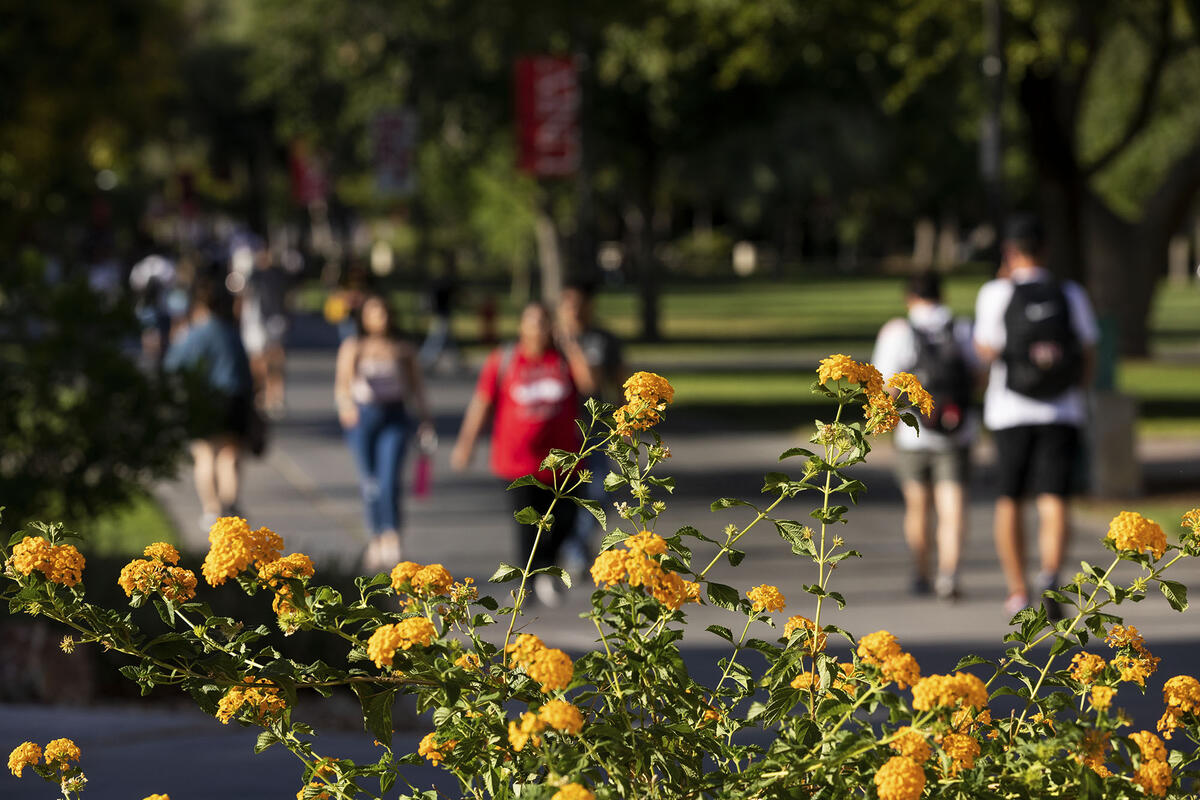The big vision is a car-free campus. By enhancing on-campus signage, building new pathways, and improving transit routes, Planning & Construction and Parking & Transportation Services partner to make strides toward this ambitious reality that will give students the option to leave their cars at home.
“This project kicks off a larger campus initiative to create a more walkable and bike-friendly campus, reducing C02 emissions and the need for new and costly parking lots,” says Tad McDowell, the director of Parking & Transportation Services. Building more infrastructure that supports alternative transportation is important because the vast majority of commuters currently use a car to get to and from campus.
Faculty, staff, and students can already sign up for discounted bus passes and Club Ride, a program through RTC of Southern Nevada that provides incentives for using alternative transportation options such as carpooling, public transportation, walking, or bicycling.
The university is currently at work planning on-campus bike paths and storage lockers so students, faculty, and staff can ditch their cars and reduce their carbon footprint. Two bike shelters that hold approximately 20 bikes should be completed by the fall semester near the Dayton and Tonopah buildings. Visitors to campus will be able to lock their bicycles in a secure location while they’re on campus.
Electric Vehicle Charging Stations
Not all cars are gas guzzlers, though! Las Vegas is one of the fastest-growing metropolitan areas in terms of electric car usage. To keep up with the demand, UNLV received a subsidy from NV Energy to install infrastructure to support electric vehicles. The university currently has 17 electric vehicle (EV) charging stations on its Maryland and Shadow Lanes campuses. This provides 34 charging spaces for electric vehicles in nine parking lots.
The demand is there. “Electric vehicle station usage has increased by almost 300% between 2015 and 2019,” McDowell says. These stations are available 24 hours a day to all UNLV parking permit holders and deliver approximately 20 miles of range per hour of charging.
Parking & Transportation Services monitors usage data and will install more stations as need be.
For more information on campus’ overall transportation vision, check out the Campus Parking & Transportation Plan.



